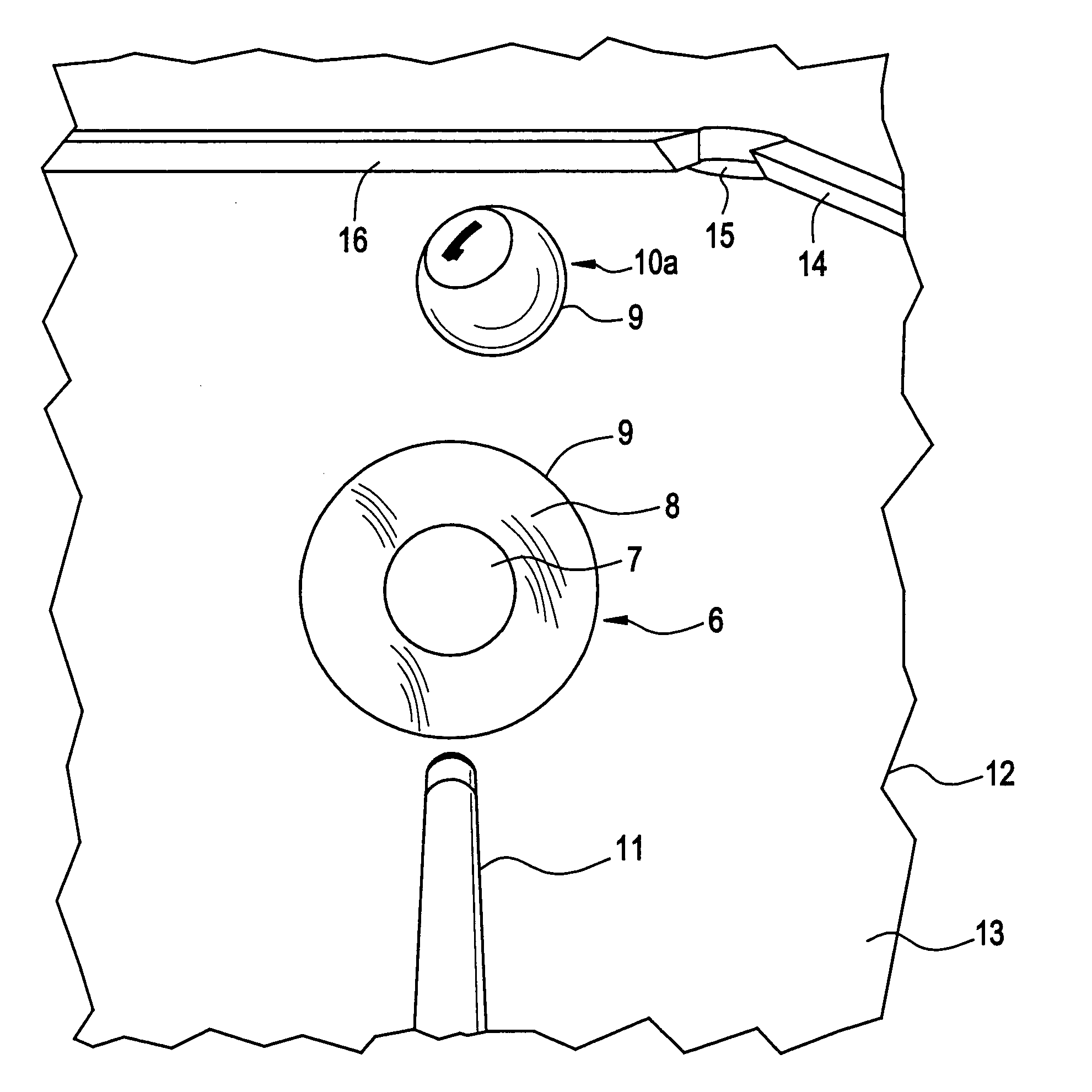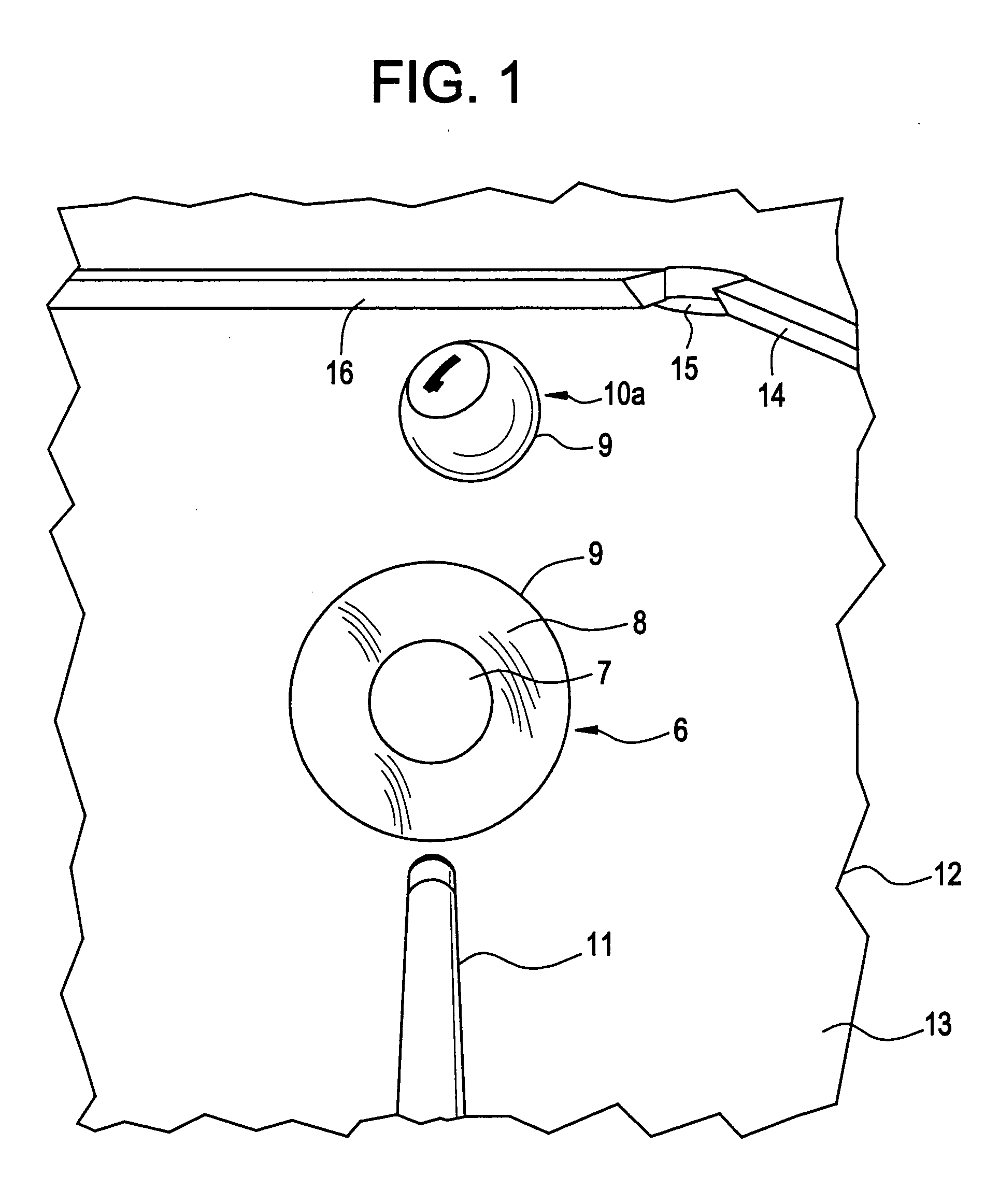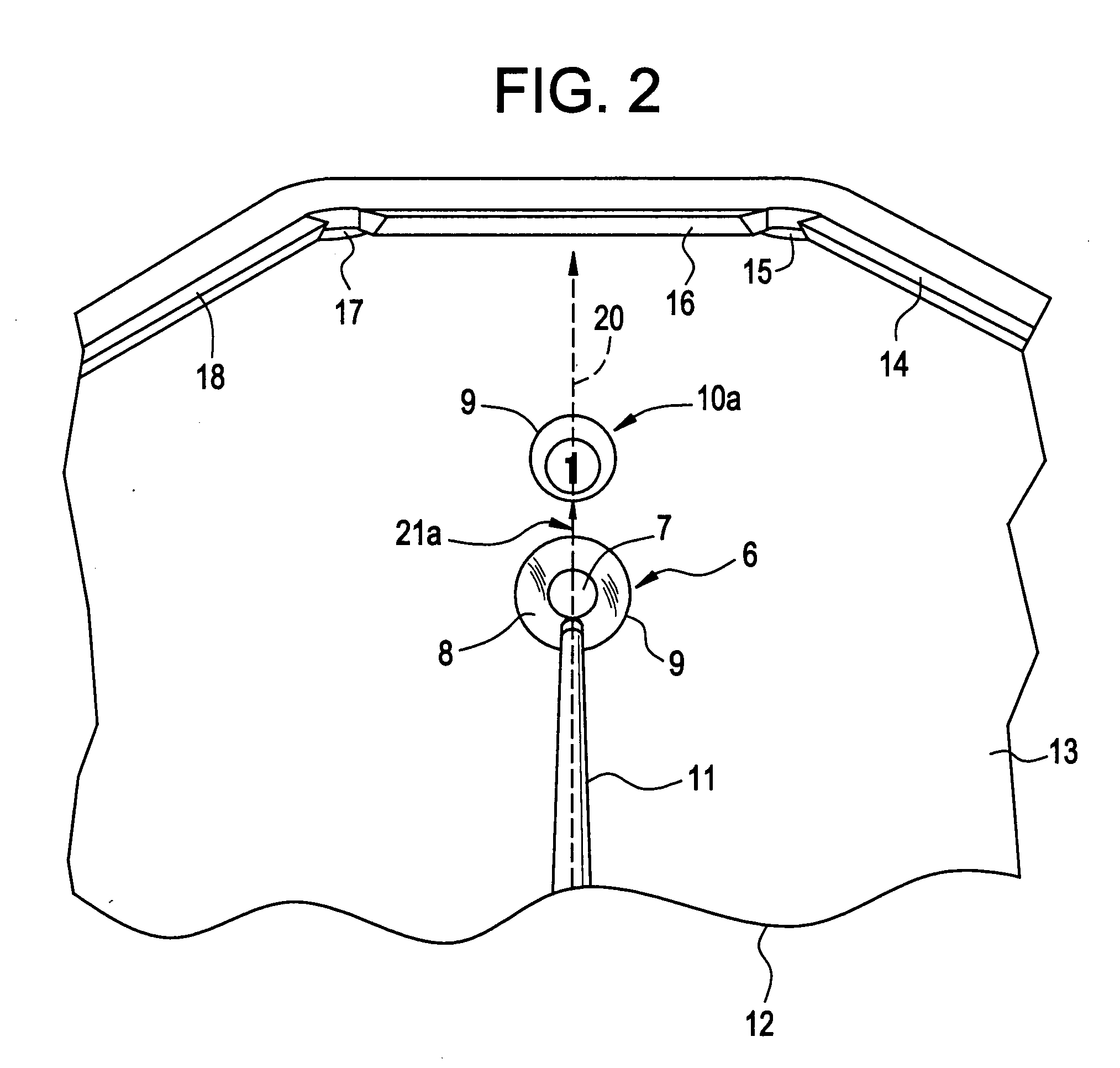Billiard training ball
- Summary
- Abstract
- Description
- Claims
- Application Information
AI Technical Summary
Benefits of technology
Problems solved by technology
Method used
Image
Examples
Embodiment Construction
[0076] (54) Reference numerals for drawings 1-5: [0077]6 billiard training ball [0078]7 opaque inner core [0079]8 transparent outer covering [0080]9 circumference [0081]10a,b object ball [0082]11 cue stick (i.e., portion thereof) [0083]12 standard pool table (i.e., portion thereof) [0084]13 planar surface [0085]14 right side rail [0086]15 right corner pocket [0087]16 end rail [0088]17 left corner pocket [0089]18 left side rail [0090]19a,b sidespin [0091]20 direct alignment [0092]21a,b,c,d direction of deflection [0093]α angle of deflection [0094]β angle of deflection [0095]θ angle of deflection
[0096] (55) The above features and advantages of the present invention, a billiard training ball, will become more apparent and be readily appreciated through the following detailed description of the preferred embodiments taken in conjunction with the accompanying drawings:
[0097] (56) FIG. 1: A billiard training ball 6 is shown in perspective view with a portion of a cue stick 11 poised and...
PUM
 Login to View More
Login to View More Abstract
Description
Claims
Application Information
 Login to View More
Login to View More - R&D
- Intellectual Property
- Life Sciences
- Materials
- Tech Scout
- Unparalleled Data Quality
- Higher Quality Content
- 60% Fewer Hallucinations
Browse by: Latest US Patents, China's latest patents, Technical Efficacy Thesaurus, Application Domain, Technology Topic, Popular Technical Reports.
© 2025 PatSnap. All rights reserved.Legal|Privacy policy|Modern Slavery Act Transparency Statement|Sitemap|About US| Contact US: help@patsnap.com



